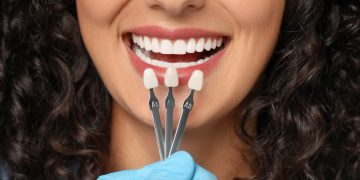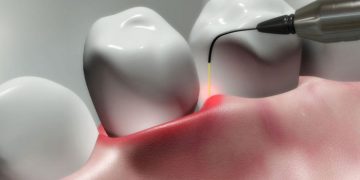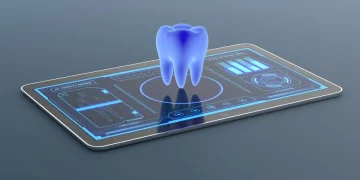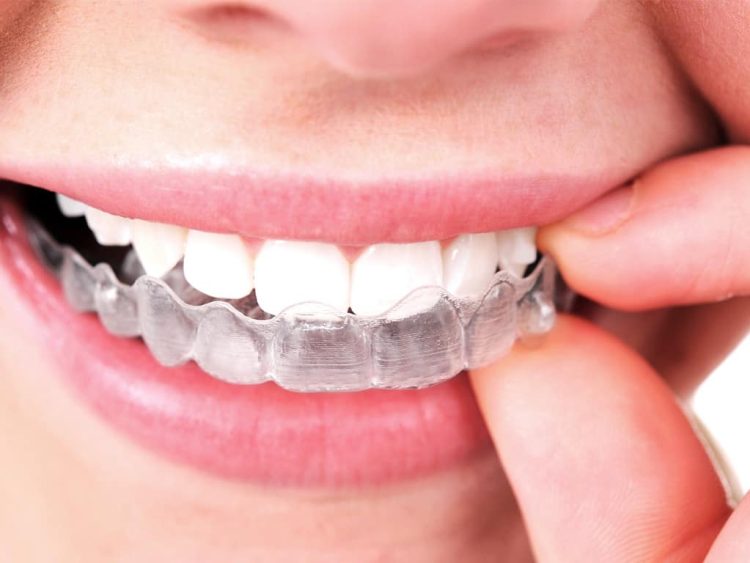Introduction
A perfect smile is often associated with good health, beauty, and confidence. It’s no surprise that people around the world seek solutions to straighten their teeth and improve their smiles. Among the most common methods for achieving a straight smile is orthodontics, specifically braces. Braces have been a go-to solution for aligning teeth for decades, but with advancements in dental technology, there are now numerous options available. But with the growing range of choices, the question remains: Is it worth getting braces for a perfect smile?
In this article, we will explore the benefits of braces, discuss the role of orthodontics in cosmetic dentistry, review how braces help maintain oral health during treatment, and consider alternatives such as clear aligners. By the end of this article, you’ll have a clearer understanding of whether braces are the right choice for you, based on your dental needs, lifestyle, and aesthetic goals.
The Role of Orthodontics in Cosmetic Dentistry
Orthodontics is a branch of dentistry that focuses on diagnosing, preventing, and correcting misaligned teeth and jaws. The primary goal of orthodontic treatment is to improve the alignment of the teeth, creating a straighter and more harmonious smile. Braces are one of the most common orthodontic devices used to achieve this goal. They work by gradually applying pressure to the teeth and shifting them into their correct positions over time.
Orthodontics plays an essential role in cosmetic dentistry by enhancing the appearance of the smile. While cosmetic dentistry focuses on improving the aesthetic aspects of dental health, orthodontics addresses underlying issues that contribute to misaligned teeth and bite problems. By straightening the teeth, orthodontic treatment not only improves the smile but also ensures better function, stability, and overall oral health.
Orthodontic treatment has several benefits beyond just cosmetic improvements. For instance, straightening crooked teeth can lead to improved bite function, reducing the risk of jaw strain, discomfort, and even tooth wear. Additionally, aligned teeth are easier to clean and maintain, reducing the chances of plaque buildup, cavities, and gum disease.
With orthodontics, many individuals experience a significant boost in self-esteem and confidence. Misaligned teeth can affect how a person feels about their smile, which can impact their social interactions and even professional life. A straighter smile can have a positive effect on a person’s overall appearance and how they are perceived by others.
Maintenance of Oral Health During Orthodontic Treatment
One of the key aspects of orthodontic treatment is ensuring that oral health is maintained throughout the process. While braces are effective in straightening teeth, they can present some challenges when it comes to proper oral hygiene. Maintaining good oral health during the course of orthodontic treatment is crucial to ensuring that the benefits of braces are long-lasting.
Brushing and Flossing with Braces
Brushing and flossing can become more challenging when wearing braces, but it’s even more important to keep your teeth and gums healthy during orthodontic treatment. Braces create small spaces around the brackets and wires where food particles and plaque can easily accumulate. If left unchecked, plaque buildup can lead to cavities, gum disease, and staining.
To keep your teeth clean, it’s essential to brush your teeth after every meal. Use a soft-bristled toothbrush to avoid damaging the braces and gums. A fluoride toothpaste is recommended to help protect the enamel from decay and maintain healthy gums. Consider using an orthodontic toothbrush or an electric toothbrush with a smaller head, which can help you reach all areas of your teeth more effectively.
Flossing can also be more difficult with braces, but it is still necessary to remove food particles and plaque from between your teeth. Specialized floss threaders or orthodontic flossers can make this task easier. Flossing should be done at least once a day to ensure that the spaces between your teeth are free from plaque and debris.
Regular Dental Check-ups
In addition to daily brushing and flossing, regular dental check-ups are essential during orthodontic treatment. Dentists and orthodontists will monitor the progress of your treatment, check for any signs of decay, and ensure that your teeth are moving in the right direction. These check-ups are an opportunity to address any issues that may arise, such as broken brackets, wires, or irritation caused by the braces.
For patients with braces, orthodontists may also recommend the use of special wax to cover any sharp or irritating parts of the braces that may cause discomfort to the inside of the mouth. Keeping up with these visits ensures that your treatment proceeds smoothly and that your oral health remains intact throughout the process.
Diet Considerations
When wearing braces, it’s important to avoid certain foods that can damage the brackets or wires. Sticky, chewy, and hard foods should be avoided as they can break or loosen the braces. These include foods like caramel, chewing gum, popcorn, nuts, and hard candies. Additionally, raw vegetables and tough meats should be cut into smaller, more manageable pieces to prevent damaging the braces.
Maintaining a healthy diet during orthodontic treatment is essential for overall oral health. A balanced diet rich in fruits, vegetables, lean proteins, and whole grains provides the necessary nutrients to keep teeth and gums healthy. Drinking plenty of water and avoiding sugary beverages will also help reduce the risk of tooth decay and gum disease during treatment.

Alternative Treatments for Straightening Teeth
While traditional metal braces have long been the go-to solution for straightening teeth, there are now alternative treatments available that may better suit certain individuals’ preferences and needs. These alternatives include clear aligners, ceramic braces, and lingual braces. Let’s explore some of these options.
Clear Aligners (e.g., Invisalign)
Clear aligners, such as Invisalign, have become one of the most popular alternatives to traditional braces in recent years. These aligners are made of transparent, medical-grade plastic that fits snugly over the teeth and gradually moves them into their desired positions. Clear aligners are removable, making it easier to eat, drink, brush, and floss without the restrictions that come with braces.
One of the key advantages of clear aligners is their aesthetic appeal. Since they are transparent, they are much less noticeable than metal braces, making them a popular choice for adults and teenagers who are concerned about the appearance of traditional braces. Additionally, clear aligners typically require fewer office visits than traditional braces, as patients can change the aligners at home.
However, clear aligners may not be suitable for everyone. They are best for individuals with mild to moderate misalignments and may not be as effective for complex orthodontic cases. In some situations, clear aligners may also require longer treatment times compared to traditional braces.
Ceramic Braces
Ceramic braces are similar to traditional metal braces but are made from clear or tooth-colored materials. This makes them less noticeable than metal braces, offering a more discreet option for individuals who want the effectiveness of braces without the prominent appearance. Ceramic braces work the same way as traditional braces by gradually shifting the teeth into alignment.
While ceramic braces are a popular choice for those seeking a less visible option, they do have some drawbacks. Ceramic brackets are more fragile than metal ones, so they can break more easily. Additionally, the clear elastics used in ceramic braces can stain over time, requiring more frequent adjustments to maintain their appearance.
Lingual Braces
Lingual braces are another alternative to traditional braces, and they are unique in that they are placed on the back (lingual) side of the teeth rather than the front. This makes them completely hidden from view, offering a discreet option for individuals who want to straighten their teeth without anyone noticing.
Lingual braces are custom-made to fit the shape of each individual’s teeth, which can make them more comfortable and effective in certain cases. However, lingual braces are typically more expensive than traditional braces and can be more difficult to adjust and clean. They also tend to cause more discomfort and irritation initially, as they sit directly on the tongue side of the teeth.
Conclusion
Braces are a time-tested solution for achieving a perfect smile, and for many, they are well worth the investment. Orthodontic treatment not only improves the appearance of your teeth but also contributes to better oral health and functionality. However, braces are not the only option available, and the decision to pursue orthodontic treatment should be made carefully, considering your unique dental needs and lifestyle.
If you’re considering braces, it’s important to consult with an orthodontist who can evaluate your dental health and discuss the best options for you. Whether you choose traditional metal braces, clear aligners, or ceramic braces, the goal is the same: to achieve a beautiful, healthy, and confident smile. Remember that orthodontic treatment requires a commitment to good oral hygiene and regular check-ups, so be prepared to invest the time and effort necessary to ensure successful results.
Ultimately, the decision to get braces should be based on your personal goals, the severity of your misalignment, and your preference for certain types of treatments. Whether you opt for traditional braces or an alternative method, the journey toward a perfect smile will undoubtedly boost your self-esteem and leave you with a more confident outlook on life.













































Discussion about this post